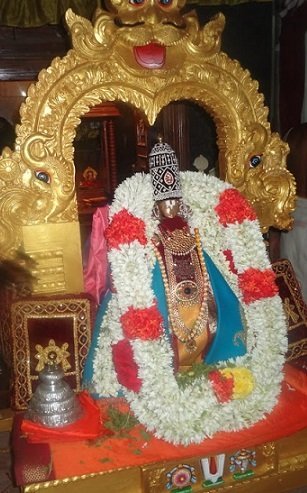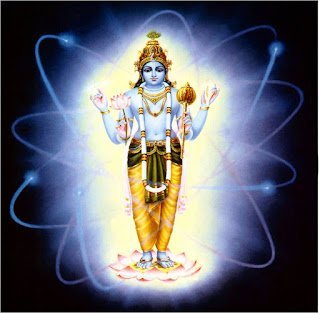This article is a direct translation of nampiLLai‘s avathArikai (introduction) for bhUthathAzhwAr‘s iraNdAm thiruvanthAdhi. Thanks to srI U. vE. M A vEnkatakrishNan swamy’s monumental effort in locating these vyAkyAnams of nampiLLai and publishing the same and also providing easy to follow thamizh explanation for these wonderful commentaries.
Please read poigai AzhwAr’s mudhal thiruvanthAdhi introduction at https://granthams.koyil.org/2013/10/aippasi-anubhavam-poigai-azhwar/.

In mudhal (first) thiruvanthAdhi, poigai AzhwAr highlighted that bhagavAn is the master of both nithya (spiritual) vibhUthi (world) and leelA (material) vibhUthi (world). Seeing that bhUthathAzhwAr understands that he is a true servitor of bhagavAn and that gyAnam (knowledge) matures in to bhakthi (devotion). mudhal thiuvanthAdhi is focussed on gyAnam; iraNdAm thiruvanthAdhi is focussed on bhakthi. This dhivya prabhandham is the outpouring of AzhwAr’s bhakthi. Does this mean that poigai AzhwAr does not have bhakthi? No – he also has bhakthi. It is different states of manifestation – one is cause and the other is effect. poigai AzhwAr‘s state is being in knowledge by meditating on the nithya and leelA vibhUthis (worlds) of bhagavAn. bhUthathAzhwAr‘s state is being in bhakthi (which is matured state of gyAnam). bhUthathAzhwAr meditates on the divine wealth of emperumAn as narrated in mudhal thiruvanthAdhi, and as a result, the overwhelming devotion leads into these pAsurams that become the dhivya prabhandham named iraNdAm thiruvanthAdhi.
In mudhal thiruvanthAdhi, the gyAnam about the supreme is explained, i.e., bhagavAn is the lord of the entire universe and the universe exists for bhagavAn. It is also explained that, this knowledge is the means to reach bhagavAn. Generally, it is seen that the means and goal are different here. How is it possible that bhagavAn is upAyam (means) and bhagavAn is upEyam (goal)? Because he is omnipotent (capable of doing everything), he is the upAyam and upEyam. kAraNam (Cause) is explained as 3 aspects.
- upAdhAna kAraNam – the (raw) material which changes into the ultimate effect. For example, soil (earthen) becomes pot – here, soil is upAdhAna kAraNam (material cause) and pot is kAryam (effect).
- nimiththa kAraNam – the efficient cause – the person(s) who bring about the change in the material. For example, Potter is the one who changes soil to pot.
- sahakAri kAraNam – the ancillary cause – the tools that are used in bringing about the change in the material. For example, Potter uses a stick and a wheel to change the soil in to pot.


அன்பே தகளி அளித்தானை
நன்புகழ் சேர் சீதத்தார் முத்துக்கள் சேரும்
கடல் மல்லைப் பூதத்தார் பொன்னங்கழல்
In hindi: https://granthams.koyil.org/2015/10/22/thula-anubhavam-bhuthathazhwar-hindi/
In thamizh – https://granthams.koyil.org/2017/12/07/aippasi-anubhavam-bhuthathazhwar-tamil/